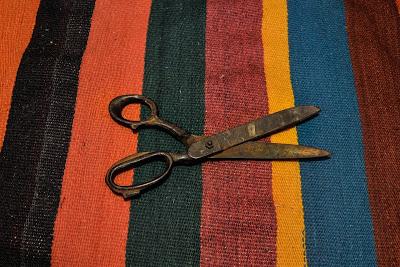 A carpet can get severely torn or snagged due to various reasons - perhaps a hot iron is dropped on it accidentally, or somebody trips and enlarges a small hole in the carpet, and so on. Repairing such a rug can seem to be tough, and it is quite natural for any inexperienced homeowner to assume that they would need to buy a new one. However, there is a wonderful and inexpensive method commonly preferred in Perth that can be used to salvage a damaged carpet no matter how much torn, burnt or snagged it is. That method is called invisible mending and as its name suggests, the repair makes the affected area appear nearly invisible to the naked eye.
A carpet can get severely torn or snagged due to various reasons - perhaps a hot iron is dropped on it accidentally, or somebody trips and enlarges a small hole in the carpet, and so on. Repairing such a rug can seem to be tough, and it is quite natural for any inexperienced homeowner to assume that they would need to buy a new one. However, there is a wonderful and inexpensive method commonly preferred in Perth that can be used to salvage a damaged carpet no matter how much torn, burnt or snagged it is. That method is called invisible mending and as its name suggests, the repair makes the affected area appear nearly invisible to the naked eye.In this blog, we are going to discuss how invisible mending is done:
First of all, loose threads and snags from the perimeter of the snagged area are removed using scissors. The threads on the backing of the carpet are cut off as well. Next, the length and width of the affected area is measured accurately. Using those measurements, a replacement carpet piece is cut out from an inconspicuous portion of the rug. This piece is usually slightly bigger than the damage it would be covering.
Now, a utility knife is used for cutting around the hole carefully. And to prevent carpet tape from working its way back in via the opening, a length around 2 inches wider than the cut-out portion’s diameter is cut. After that, the tape is inserted carefully in the place and smoothed from below to make it stick properly around the perimeter of the backing.
Finally, the brand new replacement piece is fitted into the prepared hole. The fibres are pulled from the edges of the surrounding part and then the piece is pressed firmly all around the hole to make sure that it has adhered properly to the tape. In order to achieve best results, the repaired area is generally worked on using a seam roller or carpet tractor. Fibres that stick out apparently are usually trimmed off.
This method is perhaps the most effective, durable and inexpensive one to repair carpets that have got damaged severely. Of course, you cannot expect it to work in case of a water damaged rug. However, invisible mending can definitely be your best bet for carpet burns, snags and wear & tear.

